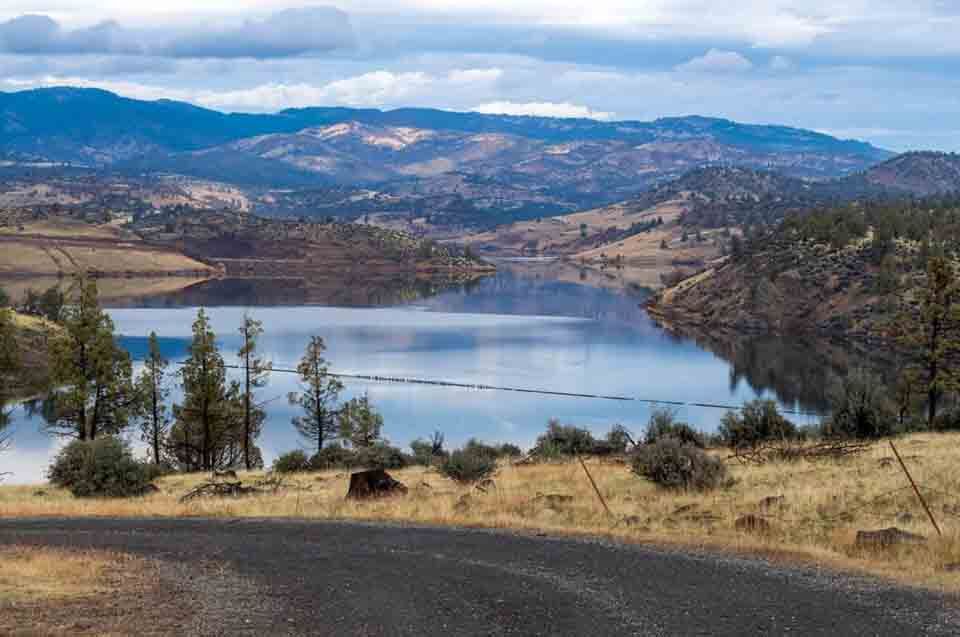Klamath Reservoir Drawdown Completion Sparks Water Quality Debate

KLAMATH COUNTY, Ore. — Commencing on January 9, three Klamath dams were breached to enable the draining of the reservoirs- marking another milestone in removing dams in the Lower Klamath Project. With the 3 dams drained, the Klamath River is now flowing roughly along its traditional channel.
UPDATE: Heavy Metals in Klamath River Water are Not Dangerous to Health, but Do Not Drink It
As Iron Gate, J.C. Boyle, and Copco 1 dams drained, a considerable amount of sediment massed and moved through the system as predicted in the plans of the Klamath River Renewal Corporation (KRRC). Mark Bransom, CEO of KRRRC stated at a press conference that they are pleased with the progress made on the drawdown. They anticipated the same amount of sediment that would normally drain in a year- 5 to 7 million cubic yards, to wash downstream, but in a short period.
Several residents expressed concerns at a long and tense public meeting on February 13. Entrapped animals and numerous dead fish, wells that have dried up in Copco Lake, possibility of exposed contaminated sediment making its way downstream were discussed.
Concerns over water quality
Dissolved oxygen levels recorded in the first 20 miles below Iron Gate Dam hovered at almost zero, as decomposing algae and oxidizing minerals robbed the water of oxygen. In addition, oxygen-poor water was released as the last of the reservoirs drained, but the river does become re-aerated as it tumbles over rocks and the major tributaries such as the Shasta River carry in oxygenated water to the Klamath River.
The project was scheduled for the winter months before adult salmon reached the river system because KRRC expected oxygen levels to dip, while the juveniles are still up in the tributaries and haven’t started their out-migration to the ocean according to Bransom.
Despite the precautions, several dead fish appeared- mostly non-native species such as yellow perch, crappie, and bass. Geoscientist for Resource Environmental Solutions (RES) Dave Coffman, said during the press conference, “It was always expected that these species would not persist.”
Related: Parched Klamath Basin Receives $72.7 Million Lifeline
In late January, almost a dozen deer got stuck in the mud and died around the former reservoir, but the California Department of Fish and Wildlife subsequently installed strings of small flags that flap in the breeze to discourage animals from attempting to cross at several locations.
The founder and CEO of the nonprofit Wild Horse Fire Brigade who lives near Yreka, California, William Simpson, presented test results of a sample collected by a neighbor showing elevated levels of several metals, including chromium. Simpson has previously published strongly worded op-eds criticizing KRRC and the dam removal project.
Coffman was hesitant to draw any conclusions about Simpson’s water test results and noted that more detail on how it was collected, taken care of, and whether it was filtered is required. He indicated that there isn’t enough information for it to be useful.
Coffman confirmed that ten years of work went into evaluating the effects of dam removal on state waters, including sediment and water quality testing. He added that previous studies, most recently by the U.S. Environmental Protection Agency in 2020, did not raise concerns that any metals or contaminants would harm aquatic life or people’s use of the river.
Siskiyou County Environmental Health water testing in late January found that in the sites closest to the dams, concentrations of iron, aluminum, lead, and arsenic were above U.S. EPA drinking water standards but additional samples were collected on February 6 to test for 49 constituents, including known carcinogens and the results of the tests will be posted on the county’s website. The county will also continue testing every quarter.
Reseeding in the sediment
In the meantime, crews from the Yurok Tribe contracted by RES started planting native seeds in the reservoir footprints on January 15. To date, about 400 acres have been hand-sown with seed mixes tailored for each site. Over 27,000 acorns and 14,000 bare-root container plants have been planted by the crews.
In a few weeks, RES will begin seeding via helicopter to cover all the acreage while the ground is still wet enough to induce germination. Tiny plants are already starting to sprout around the former reservoirs.

The amount of sediment discharging now and in the future from the former reservoirs is minuscule compared to the sediment that comes off the estimated 40,000 miles of gravel and native surface logging roads on national forests and private industrial timberland of the Klamath River Basin during major storm events. I live near the Klamath mouth and the amount of sediment in the Rriver now I have seen many times before. In fact we need periodic floods to flush all that road-related and other sediment out of the River.
These naysayers will always find rationals for their ideological discontent with dam removal.